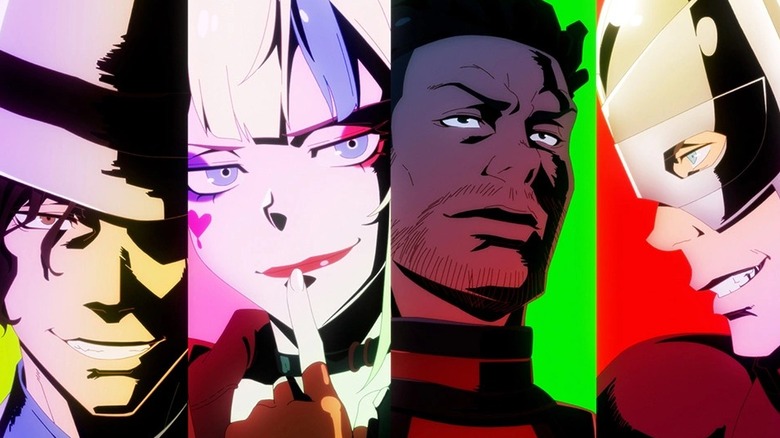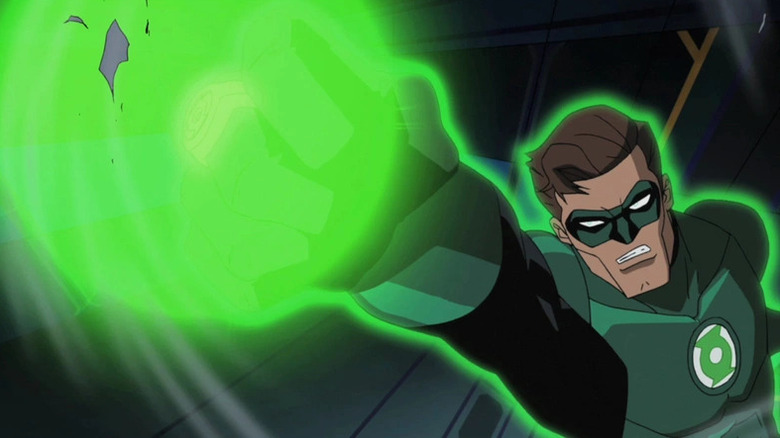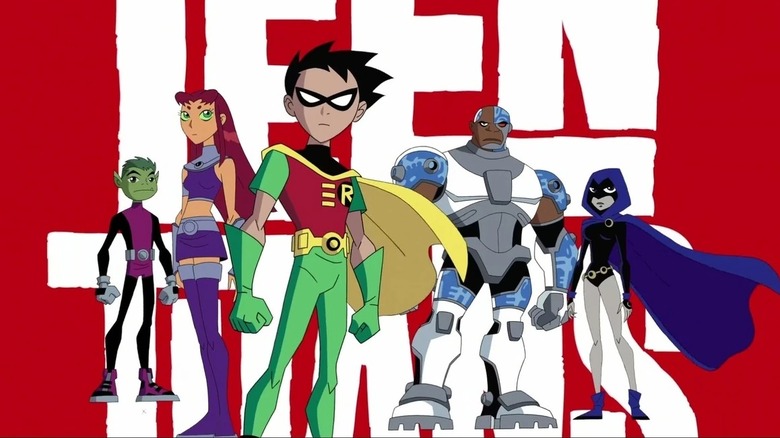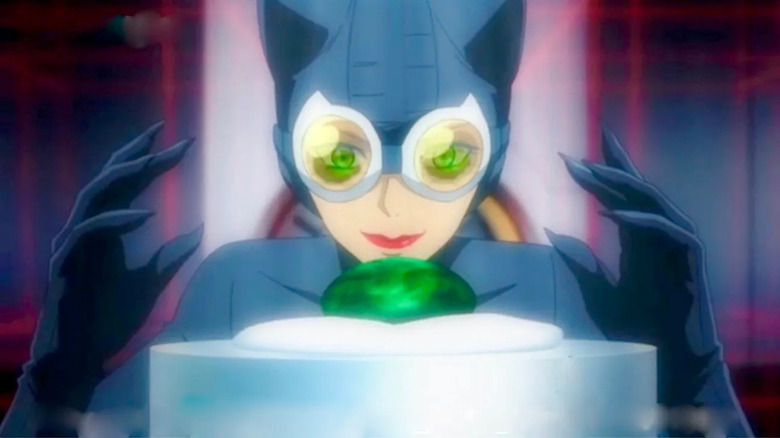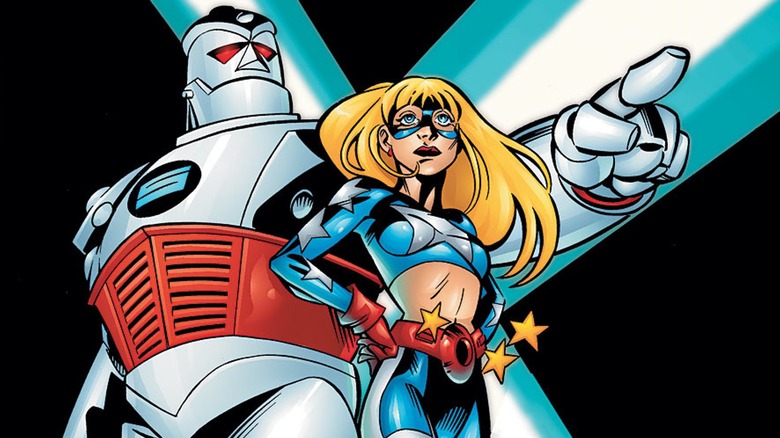5 DC Comics Characters Who Are Perfect For An Anime Series
"Suicide Squad Isekai," premiering this July, bridges the worlds of DC Comics and anime. "Isekai" is a popular anime genre; meaning "another world" in Japanese, Isekai anime follows an everyman lead being transported to a magical realm, "Alice in Wonderland" style. This time, the "everyman" leads are Harley Quinn (played by Anna Nagase instead of Margot Robbie), Deadshot, Peacemaker, King Shark, and Clayface.
WIT Studio ("Attack on Titan") is producing "Suicide Squad Isekai," but the series is only happening thanks to Warner Bros. Japan. Variety recently reported that Warner Bros. plans for DC Comics-inspired anime are only beginning. Like Disney, Warner Bros. has noticed an audience appetite for anime and is responding to it.
James Gibbons, Warner Bros. Discovery president of Asia-Pacific, told Variety:
"We've looked at our DC universe and said, 'Can we take these characters and reinvent them in [the] world of anime,' which is not straightforward because you have to do it the right way. You have to work with the right studios to make it happen and to build your fan base."
As a simple fan, I think plenty of characters/settings in DC Comics would fit an anime adaptation.
Green Lantern
The DC Extended Universe (now supplanted by James Gunn's rebooted DC Universe) was plagued by constant problems and subpar films. Zack Snyder's DC movies are usually cited as the beginning of this; "Man of Steel" was too divisive to be a solid bedrock, but WB forged ahead to disappointing results with "Batman v Superman: Dawn of Justice."
Really, though, the false starts go back earlier to 2011's "Green Lantern," which was intended to be DC's answer to 2008's "Iron Man" but ended up bombing critically and commercially. (Star Ryan Reynolds has an idea why.) I think that Green Lantern is also one of those superheroes that works better as a drawing, whether in comics or animated.
The premise of Green Lantern is there are space cops, the Green Lantern Corps, who wield rings that make green energy constructs from the Green Lantern's imagination. These constructs (impossible to render practically) look better if they're part of an animated environment, not digitally inserted afterward. Likewise, the Green Lantern Corps consists of cartoony aliens from all corners of the galaxy; animation bypasses the unflattering alien designs that plagued the 2011 "Green Lantern."
Even the archetypes fit anime. Comics critic Ritesh Babu has compared the Green Lantern mythos to the manga "Bleach" (where superpowered Shinigami each wield personalized blades as an extension of themselves, a la each Lantern's ring), and pinned the love-hate rival relationship between Hal Jordan (the Green Lantern of Sector 2814, including Earth's solar system) and Sinestro (once the Green Lantern Corps' greatest hero and Jordan's teacher, now a villain and wielder of the fear-powered Yellow Ring) as akin to anime rivalries like Naruto and Sasuke.
If there's any DC Comic that lends itself to an anime, it's "Green Lantern."
Robin and/or the Teen Titans
The beloved 2003 "Teen Titans" cartoon used an anime-inspired art style (the work of creator Glen Murakami), from the characters' spiky hair to big eyes. If it isn't broken, don't fix it.
The most popular shonen (boys) anime feature teen heroes, ones who reflect the target demographic (think Naruto, Luffy and his pirate crew from "One Piece," etc.). Robin and the Titans are, without a doubt, the biggest teen heroes that DC has in its stable. For their run on the "Robin" comic, writer Joshua Williamson and artist Gleb Melnikov kicked off by pulling from manga and pitting Damian Wayne in a tournament of other powerful fighters.
Shonen series love tournament arcs because they're an easy way to stage battles. The competition aspect also conveys how the hero wants to (in the words of Ash Ketchum from "Pokémon") be the very best, like no one ever was. Imagine a Teen Titans tournament where they face off with teen villains assembled by Deathstroke; Robin vs Slade can be the final match.
One last detail — many shonen heroes have troubled relationships with their famous but absentee fathers; sound like a certain Caped Crusader, anyone?
The Fourth World/New Gods
You may have heard how "Dune" helped inspire "Star Wars," but what about the Fourth World? That refers to a comic setting created by Jack Kirby (father of the Marvel Universe) when he briefly jumped ship to DC Comics in the 1970s. "There came a time when the Old Gods died!" proclaimed the first issue, resulting in "New Gods" split between two worlds: the utopian New Genesis and the hellish Apokolips.
Elements of the Fourth World — Apokolips, its ruler Darkseid, and his quarry, the free will eradicating Anti-Life Equation — popped up in "Zack Snyder's Justice League." That only scratches the surface though; Kirby's Fourth World consisted of three ongoing series: "New Gods," "The Forever People," and "Mister Miracle."
George Lucas has never outright confirmed Kirby as an influence on his Galaxy Far, Far Away, but fans and scholars have noted the similarities. Darkseid even has a rivalry with his son Orion (raised on New Genesis) akin to Luke Skywalker and Darth Vader. "Star Wars" has bonded well to anime with "Star Wars: Visions," so the Fourth World could do the same. Kirby's art is so colorful and alien that any attempt to bring his settings and character designs to live-action will fall short.
Imagine, too, Darkseid voiced by a prolific anime villain voice actor, say Norio Wakamoto or Naoya Uchida. Sign me up.
Catwoman
How do I know a Catwoman anime movie/series can work? Because it has before. If you want proof of concept that the DC Universe can be rendered into anime before "Suicide Squad Isekai" drops, 2022's "Catwoman: Hunted" is your movie.
"Catwoman: Hunted" was scripted by "Young Justice" creator Greg Weisman, a veteran of American animation. However, the film was animated by OLM (the studio that animates the "Pokémon" anime) and directed by Japanese animator Shinsuke Terasawa — and it shows. The characters look like they walked right off the screen from "Ghost in The Shell," and there's even a jazzy-score a la "Cowboy Bebop" (Selina Kyle standing in for Faye Valentine).
"Catwoman: Hunted" is a standalone adventure following Selina stealing a priceless "Cat's Eye Emerald" and being swept up in a globe-trotting chase with Interpol and Crime Syndicate Leviathan. There are plenty more jewels for Catwoman to steal (and super-villains for her to cross), especially if those follow-ups keep the anime style of "Catwoman: Hunted."
Stargirl and S.T.R.I.P.E.
If there are two types of characters that anime loves, it's teenagers with great power (including magical girls like "Sailor Moon") and mecha (humans piloting robots). This DC duo has both.
The set-up: Courtney Whitmore is the stepdaughter of Pat Dugan, former sidekick of Golden Age DC hero The Star-Spangled Kid. Courtney finds the Kid's old costume (including his power-bestowing Cosmic Converter Belt) and becomes the new hero Stargirl. Meanwhile, her stepfather fights beside her in a suit of Iron Man-like armor, the Special Tactics Robotic Integrated Power Enhancer (S.T.R.I.P.E.).
Stargirl comic creator Geoff Johns turned around and gave Courtney her own three-season live-action show (starring Brec Besinger and Luke Wilson as S.T.R.I.P.E.). Still, I think there's more potential for the duo in animation. They had a memorable guest appearance in season 3 of "Justice League Unlimited," where they saved Tokyo from a kaiju (apparently, the show's creators understood how anime-flavored the duo are). Plus, a blonde shortie and a taller armored buddy duo — are we talking about "Stargirl" or "Fullmetal Alchemist"?
